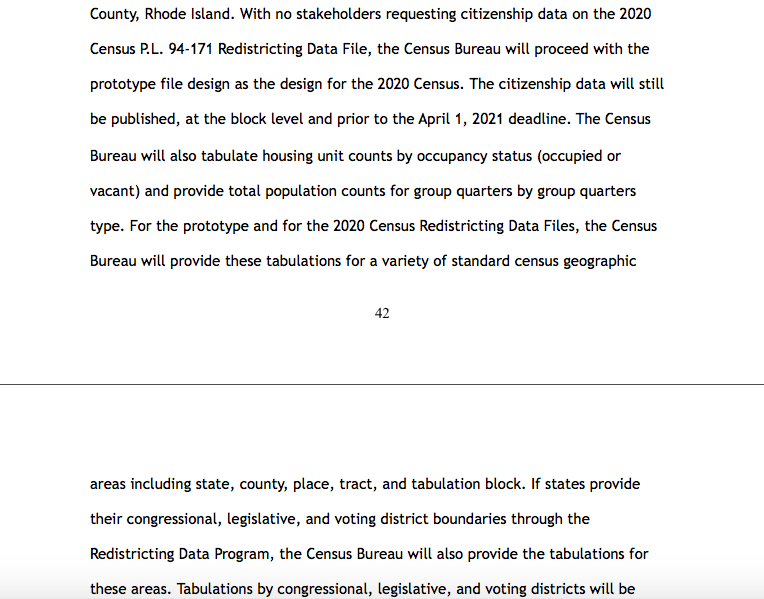The Census Bureau offered new details this week on how it will try to implement President Trump’s plan to help states diminish the political power of immigrant communities.
The disclosures came in the form of a regulatory notice posted Monday that was tough to decipher unless you’re steeped in the mechanics of the Census Bureau’s role in determining how political power is doled out across the country.
In it, the Census Bureau gave new information about how it will release citizenship data that Trump ordered it to produce. After he lost the legal fight to add a citizenship question to the census, President Trump directed the Census Bureau to collect the data based on existing government records — a project Commerce Secretary Wilbur Ross had already put in motion.
In doing so, Trump made clear what was long believed to be the endgame of a census citizenship question: to produce data that states can use to draw districts that have an equal number of citizens, rather than an equal total population. Such a change to redistricting — while wonky — would have enormous electoral consequences by allowing GOP-controlled states to shift political representation away from growing immigrant communities and towards whiter, more conservative parts regions.
There are still many questions about how that plan will unfold and whether it will be successful, given the concerns that have been raised about the accuracy of the citizenship data that will be gleaned from the existing government records
With this week’s regulatory filing, the Census Bureau answered one of them: the citizenship data will not be put on the redistricting file that by law goes out to states after every census. Instead, it will be released in a separate data product — but in the same form as the data on the redistricting file and by the deadline for states to use it in the next round of redistricting.
The Trump administration had first floated the idea of putting the citizenship data on the redistricting file more than a year ago — while the plan was still to include a citizenship question on the census.
More recently the administration had asked for “stakeholders” to submit public comments on the proposal. The regulatory notice the Bureau published Monday indicated that no stakeholder requested the citizenship data on the redistricting file.
Nonetheless, the citizenship data will “still” be published, the notice said, and at the “block level,” referring at the level of granularity used for redistricting data.

There are still uncertainties about how this release of citizenship data will play out logistically. But outside experts told TPM that they took the notice to mean that the administration was still trying to make the data be available for states to use for redistricting — particularly since the Census Bureau is planning to release it by April 1, 2021, the legal deadline imposed for giving states the redistricting data.
That date “should give many states enough time to use the data in their redistricting, if they so chose,” Michael McDonald, a professor who specializes in election administration, said, while noting that the handful of states that must draw their districts in the spring of 2021 might face a time crunch.
A Census Bureau spokesperson confirmed to TPM that the citizenship data will be broken down into the same geographical units that the data on the redistricting file is.
A a major unknown is whether existing government records will yield citizenship data accurate enough to be used for redistricting.
“We don’t yet know whether the Census Bureau can produce block level citizenship data of comparable quality to the redistricting data using administrative records,” Terri Ann Lowenthal, a consultant who is a well-regarded expert on the census, said in an email to TPM. She pointed to a presentation given by a top Census Bureau scientist last week that said the Census Bureau was giving itself until to March 2020 to make a final announcement on the form in which it will release the citizenship data.
“The Bureau does not have access yet to all of the data the president directed it consider,” she said.
There is another upshot to the Census Bureau’s announcement that it is planning to release the citizenship data in a product separate than the redistricting file.
McDonald said that doing so it will be easier for a future Democratic administration — if President Trump is defeated in 2020 — to reverse course on his plans to release the data. Several Democratic 2020 candidates have vowed to do so.
Update: This story is updated to include comments from a Census Bureau spokesperson.










